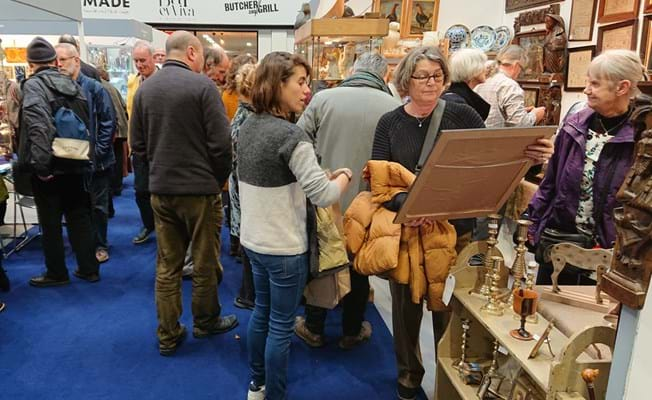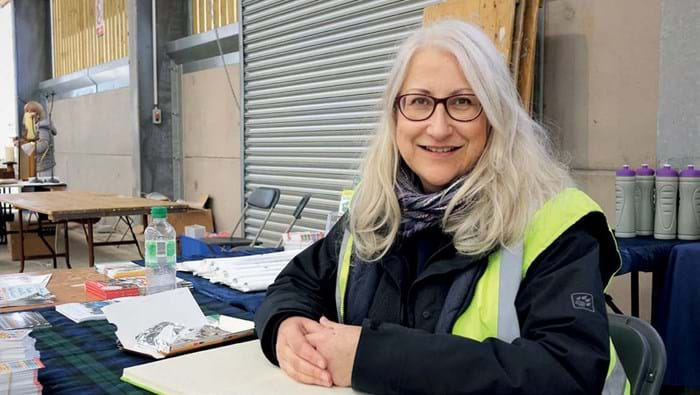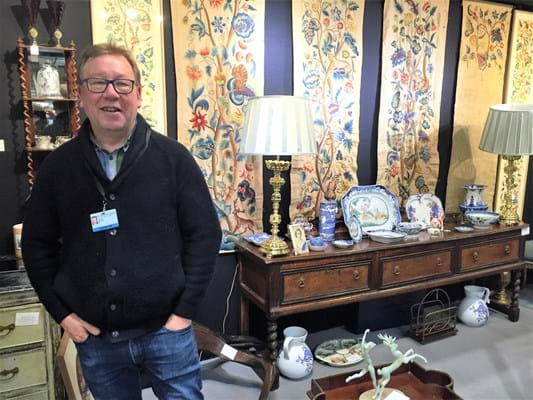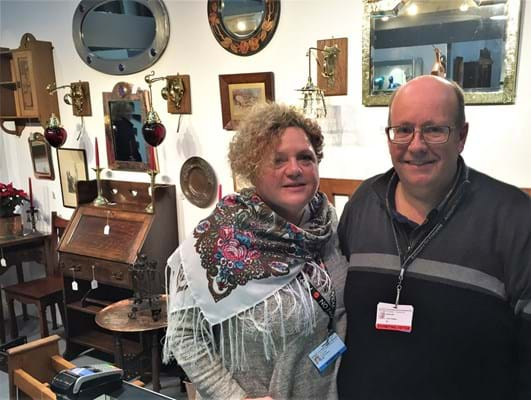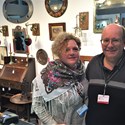ATG responds: If you have a volume of good, collectable objects, fairs are one option to help declutter.
But while you think you know fairs, as you go often to browse and buy, it’s very different being on the other side of the table or on the stand. A lot of work has gone into a dealer being at that fair.
So at your request, ATG asked the experts – dealers and organisers of vetted and non-vetted fairs – for their top tips on stalling out at indoor and outdoor fairs and they obliged.
Here are their top ten tips:
1. Do your research - on the right fair for your objects
DEALER Mark Stacey, TV expert, who stalls out at Art & Antiques for Everyone at the NEC and at the Decorative Antiques & Textiles Fair Battersea
I do vetted fairs but one-day ones too, to clear out stock and also you can buy well at those. So go to all kinds of fairs to find the right one for your objects and your budget. What sort of dealers are there? Is it the kind of fair your stock will fit into? Fairs like AAfE are vetted, so ensure your stock fits into their categories. Don’t bring items that are not allowed.
2. Do your research - on object and price
DEALER Adrian and Amelia Holt, Levels Antiques, standing at Art & Antiques for Everyone at the NEC
Fairs like AAfE attract a good volume of informed buyers – private and trade. So you need to know about the object you’re selling and its market value. Be prepared to make the odd mistake, especially when selling to the knowledgeable trade, in that you might sell your object too cheaply. We've all done it!
3. Understand what it costs to exhibit
DEALER Mark Stacey, at AAfE
Do your homework on the costs of standing at vetted fairs like AAfE and Battersea Decorative. It’s not just the cost of the stand itself, it’s the lighting etc and the cost of you being there, all of which can double the cost of your stand.
DEALER Adrian and Amelia Holt, at AAfE
Know how much it takes to put that object on a stand at a particular fair: what the object cost you, including any restoration of objects (which is where dealers add value), the fee to exhibit and the cost of getting you to the fair, from petrol to food.
4. Alter your pitch when selling to the trade
DEALER Mike Kent, Croydon, standing at IACF Runway Monday
No matter what kind of antiques fair, the trade come early, knowing what they want and what to pay. In many ways, they’re easier to deal with than private buyers. Be unpacked earlier than the official start and ready for them. They could be your most important customers of the day.
Know the history of your items and be prepared to give dealers a discount, average 10% but more if they’re regulars, buying in bulk or if the item is high value.
5. Be approachable to all buyers
FAIR ORGANISER Rachel Everett, operations manager, IACF
Some buyers tell us dealers can be a bit grumpy and not show interest in customers. Do smile when people approach your stall or stand. But I feel for dealers, as they stall out in all weathers and can be faced with aggressive buyers offering insulting prices.
6. Talk about your items, but don't under- or oversell them
ORGANISER Rachel Everett, IACF
Know the value of your objects, engage in conversation but don’t take ridiculous offers from buyers: selling is a two-way street.
DEALER Denise Weber, Aylmer Fine Art, Kildare, Ireland, stalling out at Irish and UK fairs
Be confident in your stock and avoid a hard sell. Be willing to engage with private buyers in particular about the back story of your items – we specialise in Grand Tour objects and French bronzes, so there’s lots to talk about. The person may not buy there and then: they may walk away after chatting to you, thinking about a purchase, and return later to buy.
7. Love thy neighbour: you may need their help!
DEALER Mike Kent, Croydon, stalling out at IACF Runway Monday in November
I stall out here to sell but it’s important at fairs to buy as well. If you’re on your own, make sure your stall is covered by your next door neighbour dealer when you go wandering around.
ORGANISER Rachel Everett, IACF
Be respectful of other stall holders around you. Some can be unhelpful to their neighbours about things like access, which can create an atmosphere across a two-day fair, which buyers will pick up on. Let the organiser know and they’ll do their best to smooth things over.
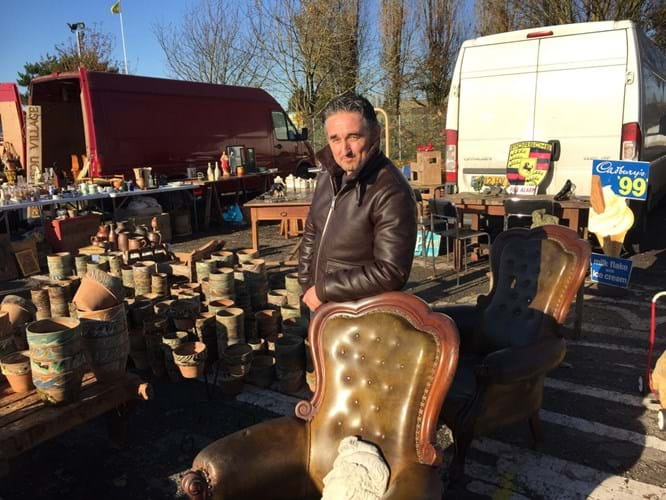
Henry Vaughan, Henry Claire Antiques and antique.gent on Instagram, pictured at IACF Runway Monday in November 2019: “Whether you’re on Facebook, Twitter or whatever, use social media to publicise your fair attendance in advance, using the organiser’s handle.”
8. Invest in a card reader (though cash is still king at some fairs)
ORGANISER Rachel Everett, IACF
Many indoor-outdoor events are still mainly about cash but the public expects to be able to use other payment methods as well. It can be risky having a lot of cash on you, so card readers are a good investment. Check with the fair organiser if they provide wifi. Talk to other stall holders for their experiences on rates charged by card merchants.
9. Use digital to boost your fair attendance
ORGANISER Dan Leyland, fair director, MaD Events (Art & Antiques For Everyone)
For ultimate success at fairs, you need a digital presence too. Dealers who think that because they sell antiques, they can have antiquated promotion too – no website, no social media – are destined to fail in today’s connected world. Thomas Glover (jewellery dealer from Shrewsbury) is a good example of a dealer who exhibits at fairs but who also has a slick website and great social media.
DEALER Henry Vaughan, Henry Claire Antiques, who stalls out at IACF Runway Monday and Sunbury & Sandown Antiques' Kempton fair
We’re Henry Claire Antiques at fairs but antique.gent on Instagram. It’s a great platform for selling. You can’t transact on it yet, but you do the deal through Messenger and then meet at fairs for delivery. And whether you’re on Facebook, Twitter or whatever, publicise your fair attendance in advance, using the organiser’s handle.
10. You’ve got to love doing it
DEALER Adrian and Amelia Holt
Stalling out at fairs is hard work and you have to really want to do it. You're not selling commodities, you're selling stories, histories, design and beauty. We have surreal conversations with buyers about the difference between a dragon, a wyvern and a griffin.
Perhaps that’s the greatest thing about selling at fairs: the interaction with buyers.


